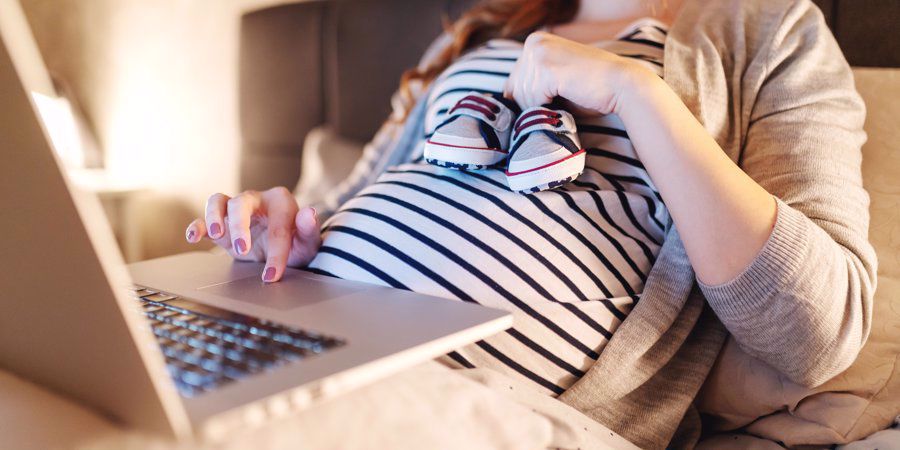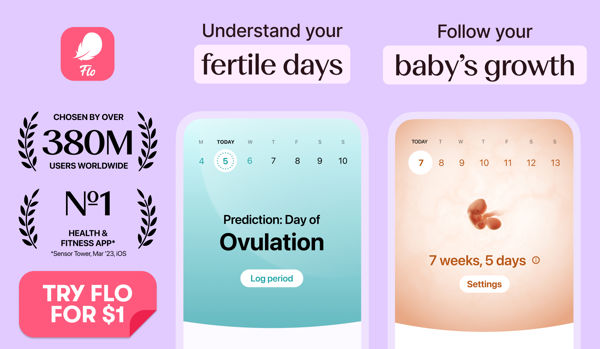There’s no exact science to ensure you conceive a girl or a boy, though it would be nice, wouldn’t it? It could be as simple as changing your diet or conceiving in a certain position or place or time of the month, but most of those are just old wives’ tales. Being able to control whether you have a baby girl or baby boy is something that a lot of parents-to-be fantasize about, but end up just as happy as long as their bundle of joy comes out healthy.
In this post, we will explore the most popular methods people have come up with to ensure they have their desired sex. Though many of these methods of swaying the baby’s sex are not scientifically proven, they can be fun to read and even more fun to try, just don’t rely on them to work!

How to Conceive a Girl
Method 1: The Shettles Method
Dating back to the 1960s, the Shettles method claims a 75-90% success rate for couples trying to conceive a girl. Dr Shettles believed that the most important factor in controlling the sex of the baby was timing. The baby’s sex is determined by the chromosome carrying sperm. ‘Boy sperm’ are said to swim faster but not survive very long. ‘Girl sperm’ are stronger and more resilient but swim slower than their male producing counterparts. According to Shettles’ study, a couple wanting a baby girl should try and conceive two to four days before ovulation. By the time ovulation occurs, only the girl sperm should be left to fertilise the egg. Sperm, in general, survives an average 72 hours, in which time it seeks an egg. If none is found, the sperm dies off as it cannot sustain itself. So while the timing of this method may be accurate, there’s no guarantee that those will be “girl sperms” that make it to the end zone.
Method 2: Whelan’s Method
The second method hailed by its followers was theorised by Dr Whelan. Only claiming a 57% success rate, her theory has similar timings to Shettles, claiming you must conceive two or three days before ovulation. This is still a valid timeline, but again it is no guarantee that it is a girl, and a 57% average is a relatively normal variation of birthing boys versus girls.
Method 3: Positions
The second part of Shettles’ theory is that the baby’s sex can be determined by the position in which the baby is conceived. It is believed that shallow penetration, coupled with the sperm ejaculated close to the entrance of the vagina favours female conception because the area is more acidic, which will kill off the weaker ‘Boy Sperm’. Recent sex education can pretty much take down this idea, as a vagina maintains the same ph balance whether at the entrance or near the cervix. You can conceive from shallow penetration just as easily from any other kind, but there’s not much proof behind this being the key factor.
Method 4: Amount of Sex
According to Shettles, rather than restricting your sex life to specific times as is normally recommended, when trying for a girl you should aim to have more sex. This theory became popular for a number of reasons, as you can imagine. In the days leading up to your fertile window, you should have as much sex as you can. Reducing your partner’s sperm count will mean that there are fewer fast-swimmers available to partake in the race to fertilization.
Method 5: The Girl Diet
Cutting out certain foods, lowering calories and reducing your intake of particular foods in a bid to help your chances of conceiving a girl has been said to hold some merit. Reducing your calories to around 1500-1800 per day and practicing portion control is the key message of this diet. It is recommended to cut out red meat, which increases testosterone levels in the body as well as reducing the salt and potassium intake. This can mean limiting or removing bananas, potatoes and tomatoes from your diet as well as restricting your use of table salt. Some have also claimed that cutting out high-fat foods can also aid your chances of this so-called “Girl Diet.” Instead, you are told to guzzle cranberry juice and milk, and eat high-carb foods like pasta with cheese and butter as well as consuming lots of fresh fruit throughout the day. Parents all across the world have claimed that changing the way they eat prior to conception has increased their odds of having a baby girl, though many say the diet is not the sole reason.

How to Conceive a Boy:
Method 1: The Shettles Method
Looking once again at this theory that ‘Boy Sperm’ are faster to the egg than the ‘Girl Sperm’, the couple must have sex as close to ovulation as possible so that the faster swimmers can get to the egg quicker. Depositing the sperm through deep penetration, in the least acidic area near the uterus opening, allows the faster ‘Boy Sperm’ to reach the egg first. It is pretty generous to call this scientific since the ph level does not generally vary within the vagina. Intercourse should occur from 5am and continue every 2 hours during the ovulation period; however, according to this theory, eggs are more likely to be fertilised before 7am, which is known as “the peak conceiving period”. Intercourse should occur no earlier than 24 hours before ovulation and no later than 12 hours since you have ovulated.
Whelan’s method, however, suggests that for a boy, you must have intercourse four to six days before your fertile window (ovulation) in order to increase the likelihood of having a boy.
Method 2: Position & Orgasm
Sperm that is closest to the cervix has a better chance of reaching the egg before they die off by the time they reach the fallopian tubes. Twelve hours before ovulation is thought to maximise your chances of having a boy. According to studies, it also helps if the woman orgasms in order for the body to relax more and become more accepting to visitors. When a woman has an orgasm, the alkaline properties in the vagina are boosted, which helps the sperm survive longer. Orgasm also causes uterine and vaginal contractions which help to push the sperm up to where they need to go.
Method 3: The Boy Diet
Much like the ‘Girl Diet’, restricting certain foods is said to help your chances in conceiving a boy. Cutting out spicy foods that contain vinegar, citrus and fruit juices or foods that are tart or tangy is one aspect., Avoiding dairy and swapping it for a higher intake of carbs, healthy fats, and vitamin A is recommended. Eating more potassium-rich foods like bananas, broccoli, potatoes and spinach is suggested to make the vagina a less acidic environment, allowing the weaker “Boy sperm” to reach the unfertilized egg.
Caffeine could also be a contributing factor to the conception of a baby boy. It has been theorised that coffee, energy drinks or even some chocolate before sex could increase your chances, so having a bar of chocolate can’t hurt! Be mindful of your caffeine intake as it is generally not beneficial to your body, and it restricted during pregnancy for a reason.
Myth Busting
The facts remain that is actually the men that can influence the sex of the baby, not the women. Men provide the sperm that either has an X or Y chromosome which determines the sex of the baby. Both testicles produce both boy and girl sperms and it is impossible to put your money on one sex or another without external control. Some men do produce more X or Y sperm which could account for why some families have a large number of boys or girls, but that can just be a genetic fluke. Trading in the tight boxer briefs for some loose-fitting boxer shorts, however, could prevent the testes from overheating, which in turn can stop the reduction of sperm that are produced, and make conception more likely.
The use of herbal and complementary medicine remedies have also been proven to make no impact on determining or swaying the sex of the baby at conception. While there will always be people who insist that that was the answer, take those testimonials with a grain of salt.
All of these methods, bar one, have been brushed aside by medical experts as there have been many conflicting results in further studies and tests on the subject. Unfortunately, they’ve found little supporting evidence to say that these methods work at all. The only method mentioned above that has scientific and medical backing is the timing of intercourse. Under Shettles and Whelan’s advice is to keep track of your ovulation cycle and aim to have intercourse before or during to help increase your chances of having a baby Their theory of timing for a boy or girl, however, is not confirmed.







